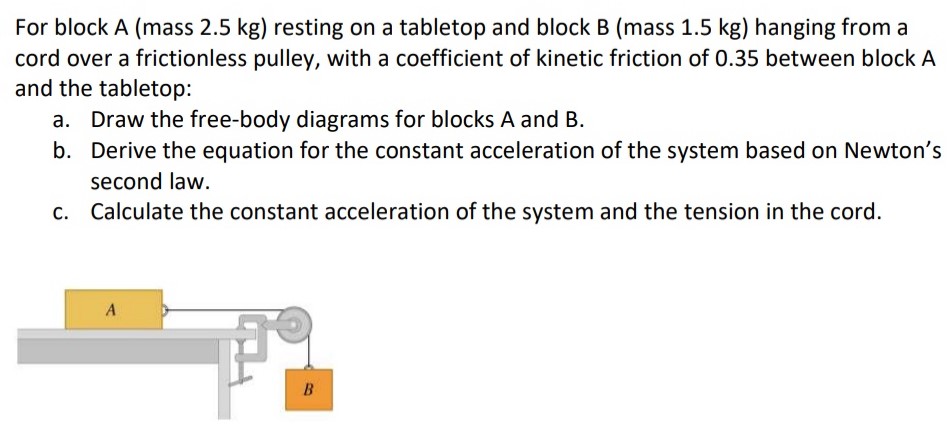For block A (mass 2.5 kg) resting on a tabletop and block B (mass 1.5 kg) hanging from a cord over a frictionless pulley, with a coefficient of kinetic friction of 0.35 between block A and the tabletop: a. Draw the free-body diagrams for blocks A and B. b. Derive the equation for the constant acceleration of the system based on Newton's second law. c. Calculate the constant acceleration of the system and the tension in the cord. A B
